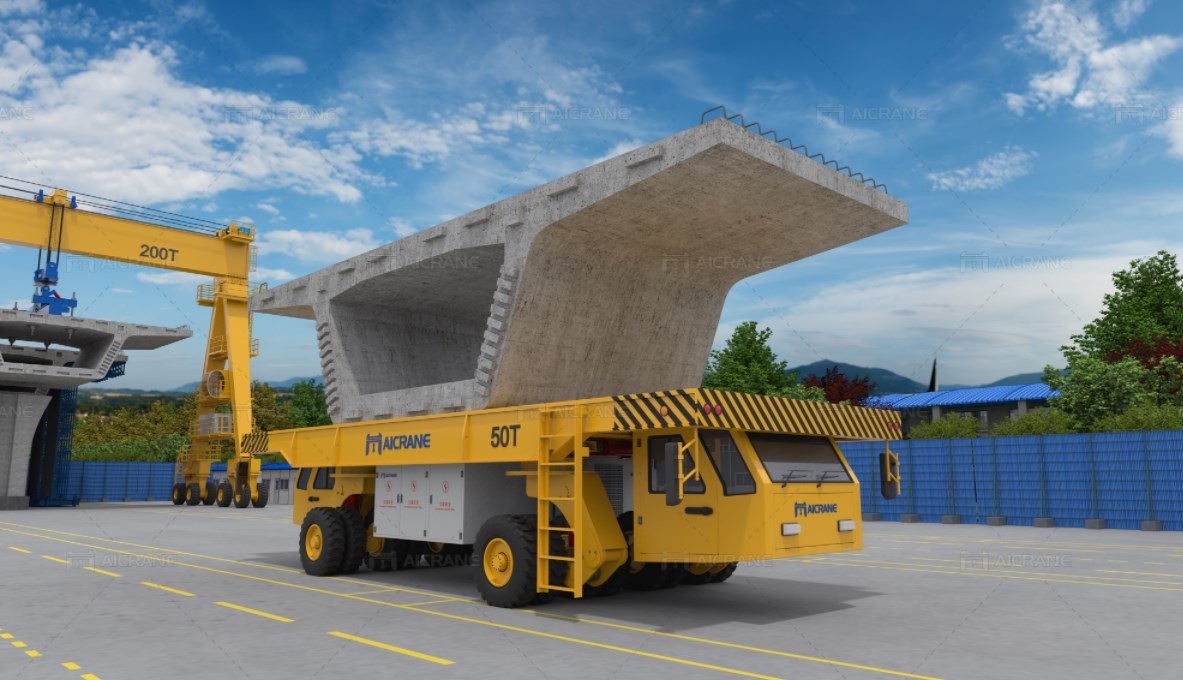
The Role of Hydraulic Transporters in Bridge Construction
The construction of bridges represents a remarkable feat of engineering, requiring precision, innovation, and cutting-edge technologies to bring these structures to life. Among the many tools and machinery employed in bridge construction, hydraulic transporters play a crucial role in facilitating the movement of heavy components and materials with unparalleled efficiency. This article delves into the working process of hydraulic transporters, exploring their design, capabilities, and significance in the construction of bridges.
Overview of Hydraulic Transporters
Hydraulic transporters, also known as self-propelled modular transporters (SPMTs), are sophisticated vehicles designed to move and transport heavy loads with precision and safety. These machines consist of modular units equipped with hydraulic systems that enable controlled movement in all directions. The hydraulic transporters are particularly indispensable in bridge construction, where the transportation of colossal components such as bridge sections, beams, and support structures demands specialized equipment.

Design and Components
Hydraulic transporters are meticulously engineered to ensure optimal performance and adaptability to various construction environments. The basic design comprises a series of self-propelled modular units, each featuring hydraulic systems, wheels, and a robust frame. The modular nature of these transporters allows them to be configured into different combinations, adapting to the size and weight of the load they are transporting.
The hydraulic systems are the heart of these transporters, providing the necessary force and control for precise movement. These systems consist of hydraulic cylinders, pumps, valves, and a central control unit. The hydraulic cylinders actuate the movement of individual wheels, enabling the transporter to move forward, backward, sideways, and rotate in place. The integration of a centralized control unit ensures synchronized operation, preventing any imbalance or misalignment during transportation.
Working Process in Bridge Construction
Load Distribution and Configuration
The first step in utilizing hydraulic transporters in bridge construction involves configuring the modular units to accommodate the specific load. Engineers carefully assess the weight and dimensions of the bridge components, determining the optimal arrangement of the transporters. By evenly distributing the load across multiple modular units, the hydraulic transporters ensure stability and prevent excessive stress on individual components.
Lifting and Positioning
Hydraulic transporters are equipped with lifting capabilities, allowing them to raise and lower the load as needed. In bridge construction, this feature is crucial for positioning heavy components with precision. Whether it's lifting a massive bridge segment into place or adjusting the height to navigate over obstacles, the ability to control the elevation of the load is fundamental to the success of the construction process.
Maneuverability and Alignment
One of the key advantages of hydraulic transporters is their exceptional maneuverability. Controlled by the hydraulic systems, the transporter can move in any direction, including sideways and diagonally. This capability is invaluable when navigating tight spaces, corners, or complex construction sites where traditional methods of transportation would be impractical. The precise alignment and positioning of bridge components are essential for ensuring a seamless and structurally sound assembly.
Synchronization and Safety
The synchronized operation of hydraulic transporters is a critical factor in ensuring the safety and stability of the load. The central control unit oversees the movement of each modular unit, maintaining a harmonized approach to transportation. Safety features, such as anti-collision systems and automatic leveling, further enhance the reliability of hydraulic transporters, reducing the risk of accidents and damage to both the load and the construction site.
Versatility in Bridge Construction
Hydraulic transporters exhibit versatility in various aspects of bridge construction. They are adept at transporting not only large bridge sections but also heavy machinery, construction materials, and support structures. Their adaptability allows for the efficient movement of diverse components, streamlining the construction process and contributing to project timelines.
Conclusion
In the intricate world of bridge construction, where precision and efficiency are paramount, hydraulic transporters stand out as indispensable allies. Their sophisticated design, hydraulic systems, and modular configurations enable the seamless movement of heavy loads with unparalleled accuracy. As technology continues to advance, the role of hydraulic transporters in bridge construction is likely to expand, contributing to the realization of even more ambitious and awe-inspiring bridge projects in the future.